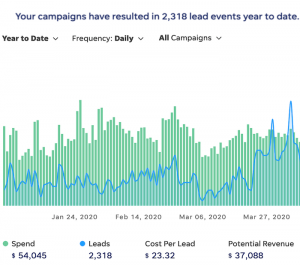Mass customization is a trend that many businesses of varying size and scale have dabbled in. In today’s consumer-driven marketplace, it’s a smart idea to create custom offerings that meet the specific demands of customers. However, not every organization is able to capitalize on this phenomenon the way they would like to.Yet, some small and medium-sized businesses (SMBs), especially those in the consumer packaged goods (CPG) space, have found great success in their mass customization attempts. By choosing the correct customization model, or combination of models, and making continuous improvements, your SMB can harness consumers’ loyalty and set itself apart from the competition.

The 4 Mass Customization Models
Harvard Business Review contributors James H. Gilmore and B. Joseph Pine II outline four approaches to mass customization in their article “The Four Faces of Mass Customization.” Based on their available resources and target markets, SMBs may choose to adopt one or more of these models. Regardless of which model is chosen, every business’’ primary concern should be to deliver products of high value to customers. Below are descriptions of the four mass customization approaches and when it is appropriate to utilize each approach.
- Collaborative: This approach entails working with individual consumers, typically during the design phase of a product, to create an offering that fulfills the precise needs of that consumer. This approach can also work in the distribution stage, as consumers can dictate exactly where, when, and how they want their purchase delivered to them. Company representatives are available to help consumers articulate their needs. This method is helpful for consumers who may be unsure of what exactly it is that they want, or who are overwhelmed by the plethora of options available to them.
- Adaptive: This method involves creating one standard product that can be customized by users after purchase. This approach makes the product usable for a variety of purposes and occasions. Consumers are able to attach their own value to the product because it can be permutated for them. Technology allows the product to be easily altered by consumers without any direct interaction from the company who produced it.
- Cosmetic: With this approach, simply the presentation of the product is altered for various consumers. The product is used the same way by the varying consumer groups, but is packaged differently for each of them. This means that advertising and promotional campaigns for the product may also be designed and communicated differently for each consumer group.
- Transparent: This method provides consumers with unique products that meet their needs without letting them know that their offering has been customized. This approach works when consumers’ demands can be easily predicted or when consumers don’t want to articulate their needs repeatedly. Deductions about consumer preferences are made through research and observation conducted by the company.
Companies Are Catching On
With so many options for how they can tailor their offerings to satisfy customers, why haven’t all companies taken advantage of mass customization? One reason is that the profits generated from mass customization are considered “small” for many corporate giants. However, SMBs are more willing to craft offerings that appeal to niche markets and not just to the masses. For example, Francisco Gimenez, CEO of eSalon (an ecommerce company that offers customized hair products), believes his company will hit $ 100 million in sales in the near future; this projection is great for his business, but less than satisfactory for bigger industry players.
By customizing products on a large scale, businesses are able to deliver to consumers what they really want without adding unnecessary processes and complexities. Consumers are inclined to buy products from companies that solve the problems they’re facing without requiring adjustments after purchase. For instance, consumers prefer buying a pair of pants that fits them perfectly rather than buying pants that need to be hemmed or taken in at the waist after purchase. Being able to accommodate consumers’ specific requests will ensure a demand for your company’s products. SMBs can use data collection to gain insights about consumer preferences and become “information aware.” Gartner Research Director Olive Huang describes this concept as “being in possession of not only the correct knowledge to address a customer’s issue, but also knowing the customer’s context at the time of contact.”
How can customizing offerings that meet a diverse array of consumer needs be cost effective? Gilmore and Pine write that cost effectiveness is achievable because businesses who customize products stock raw materials for assembly instead of personalized finished products. Such is the case with collaborative customization. In the instance of adaptive customization, a standard product is designed with the intent that end-users will do the customizing without involvement from the company.Cosmetic customization is simply a change in packaging and presentation with no alteration of the product whatsoever. With transparent customization, affordable preliminary data collection is required to deliver customers’ what they need. Therefore, mass customization is attainable for SMBs. Furthermore, technology enables consumers to design products on their own with little help from the companies who manufacture them, writes Entrepreneur journalist Arlene Weintraub. Technology also makes it easy to produce and deliver custom offerings in a timely and efficient manner.
SMBs have an advantage over corporate giants in regards to mass customization because of their ability to gratify niche markets while still making a profit. Businesses should choose a customization approach that aligns with their goals and satisfies consumers’ requests. Companies also need to stay up-to-date on consumers’ preferences and seek out feedback from them. Being able to administer a custom offering that is of high-value to consumers will put your brand ahead of the competition.
Business & Finance Articles on Business 2 Community
(123)







